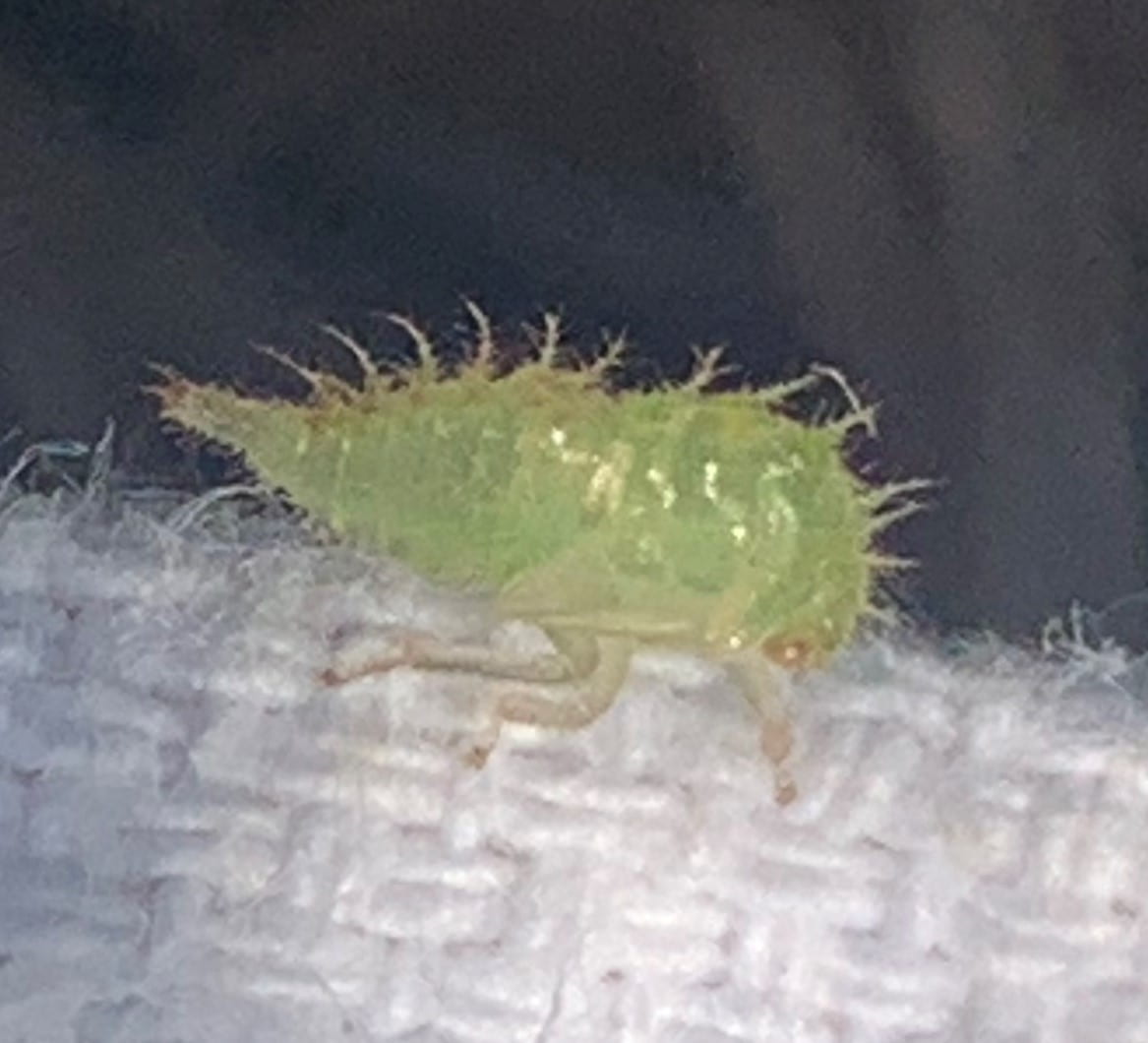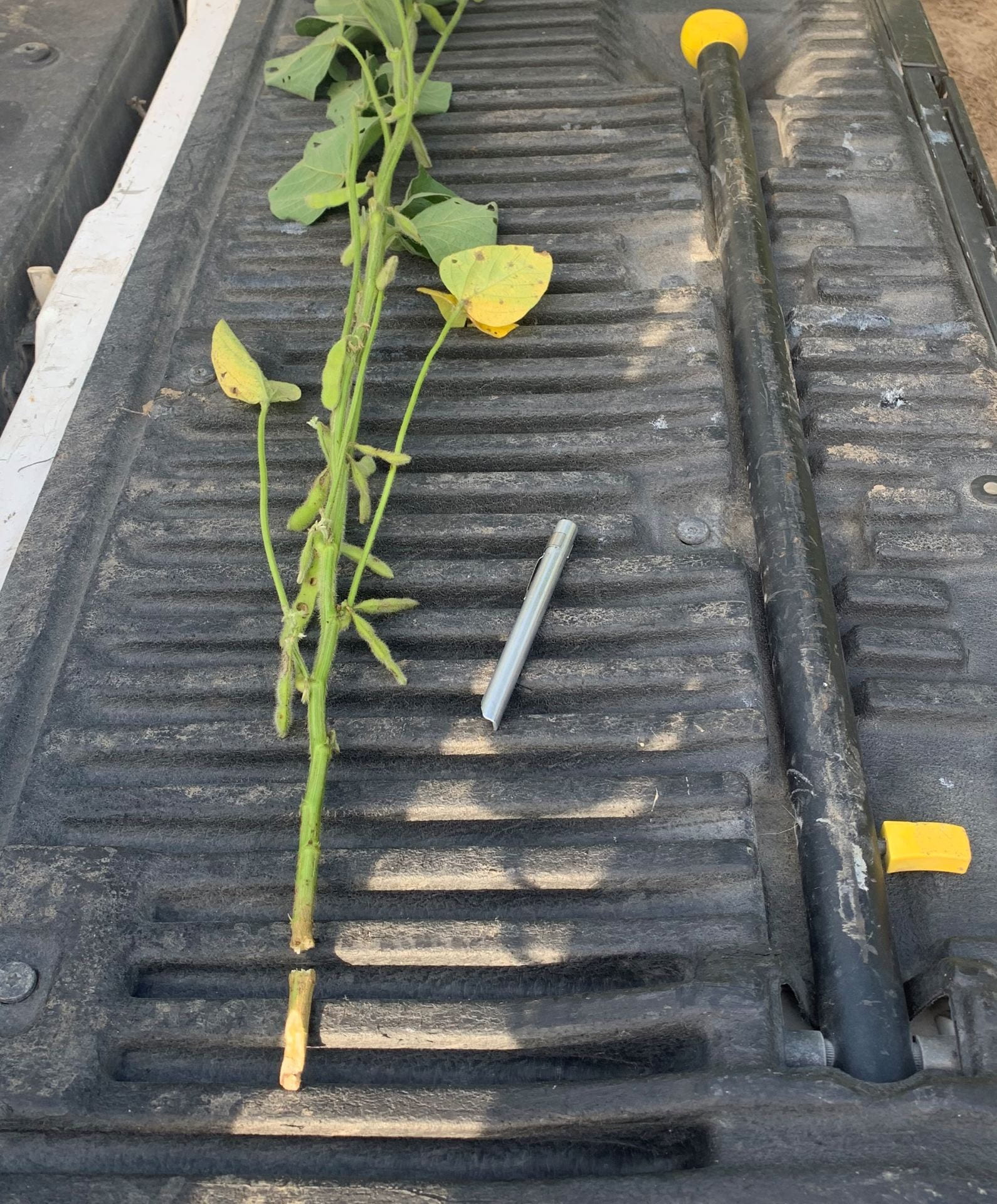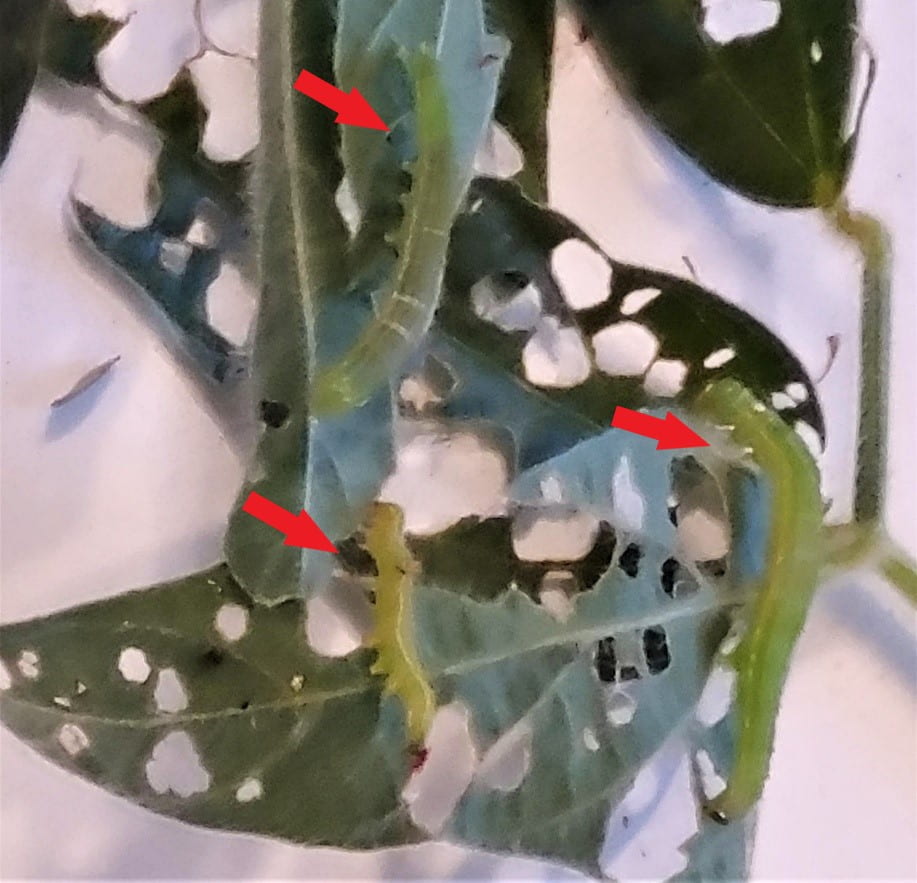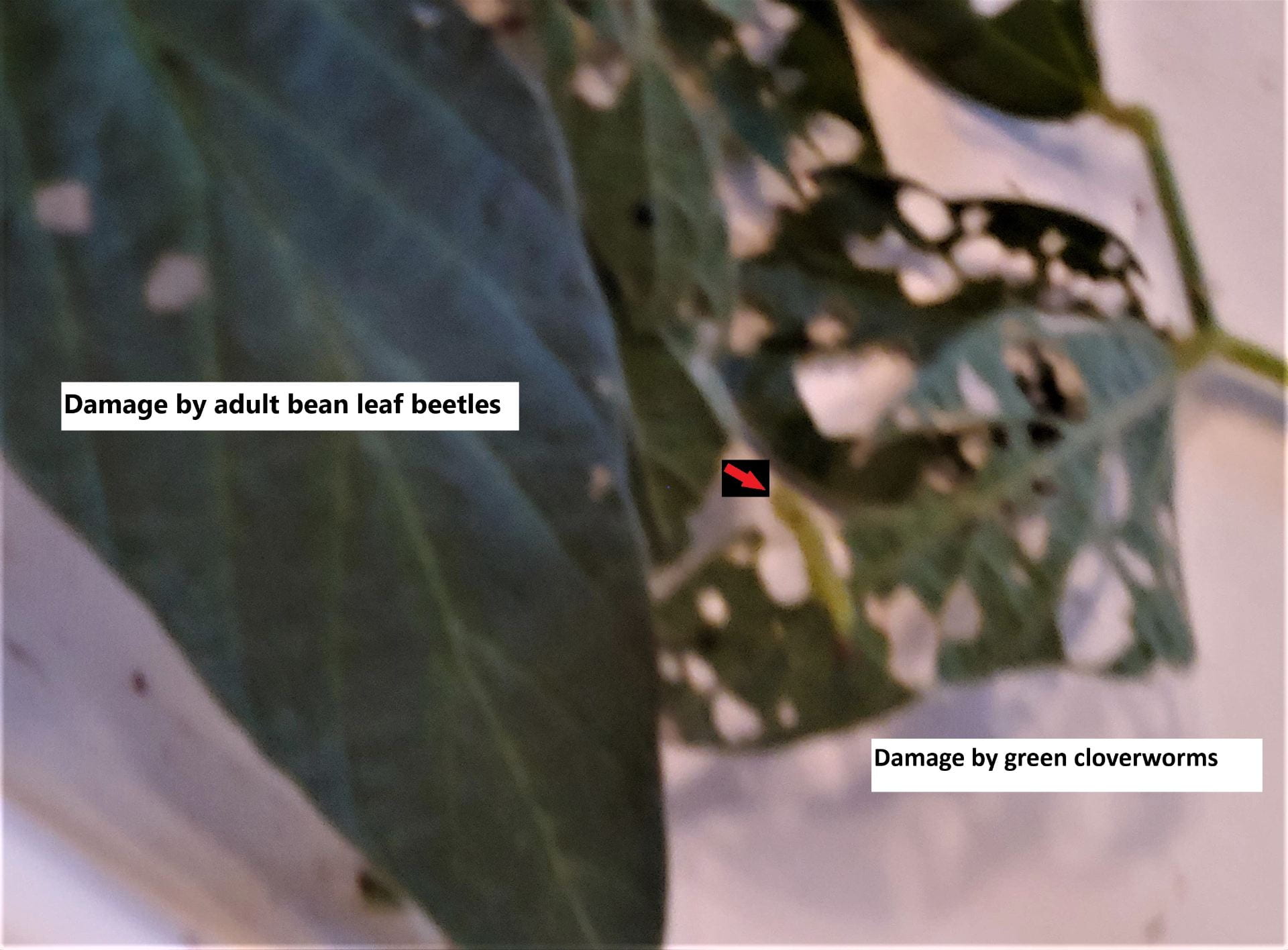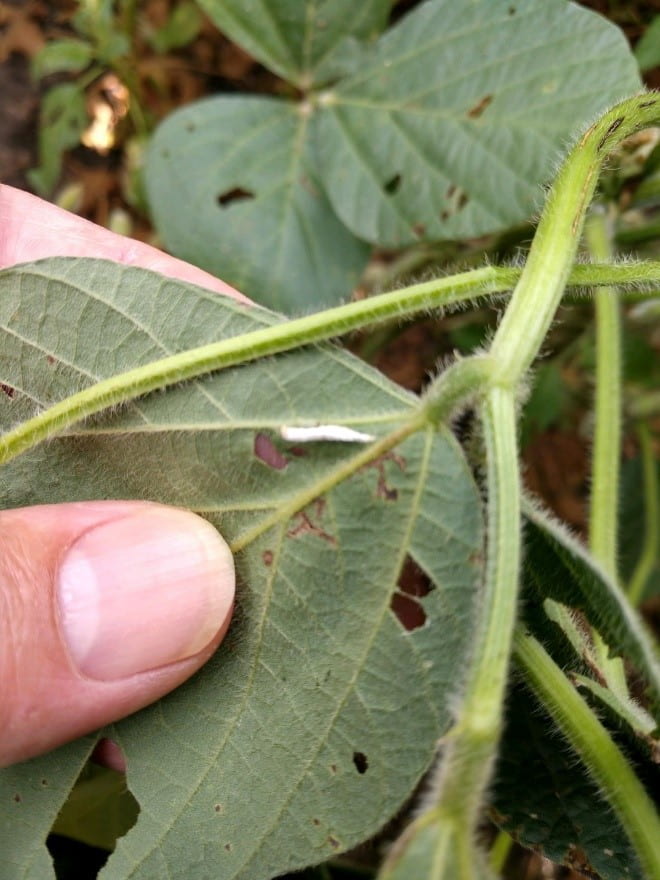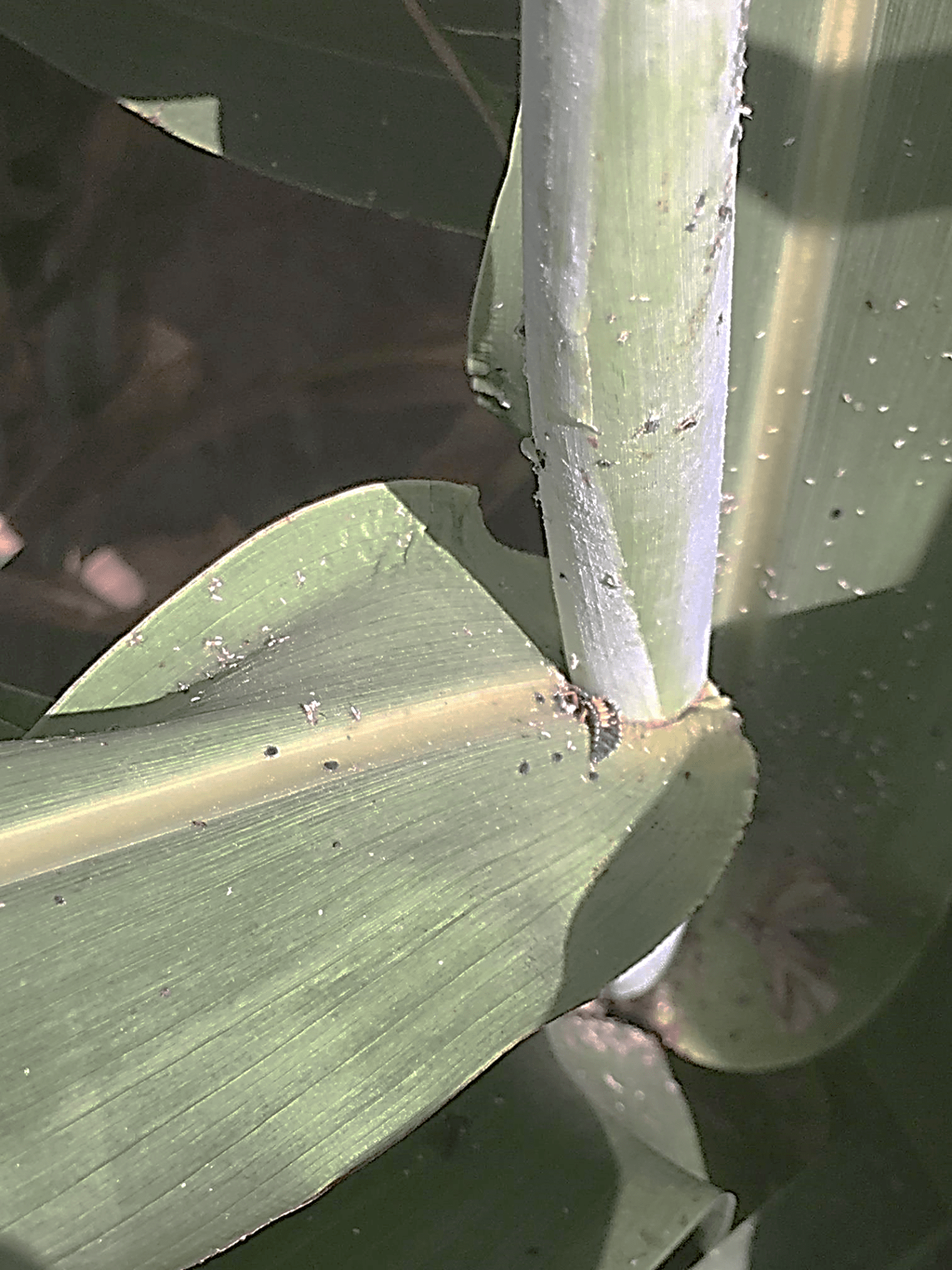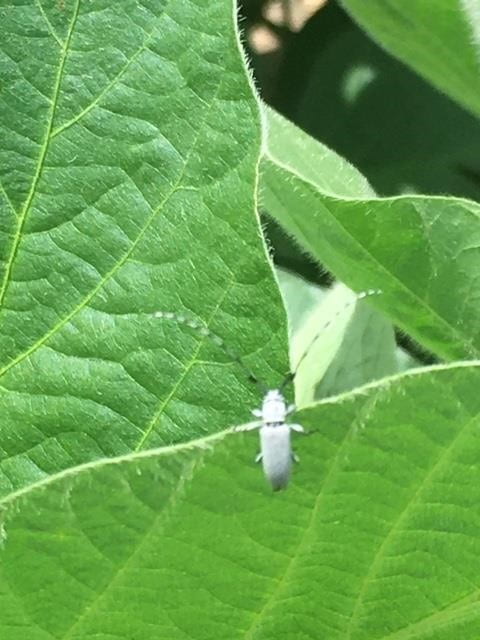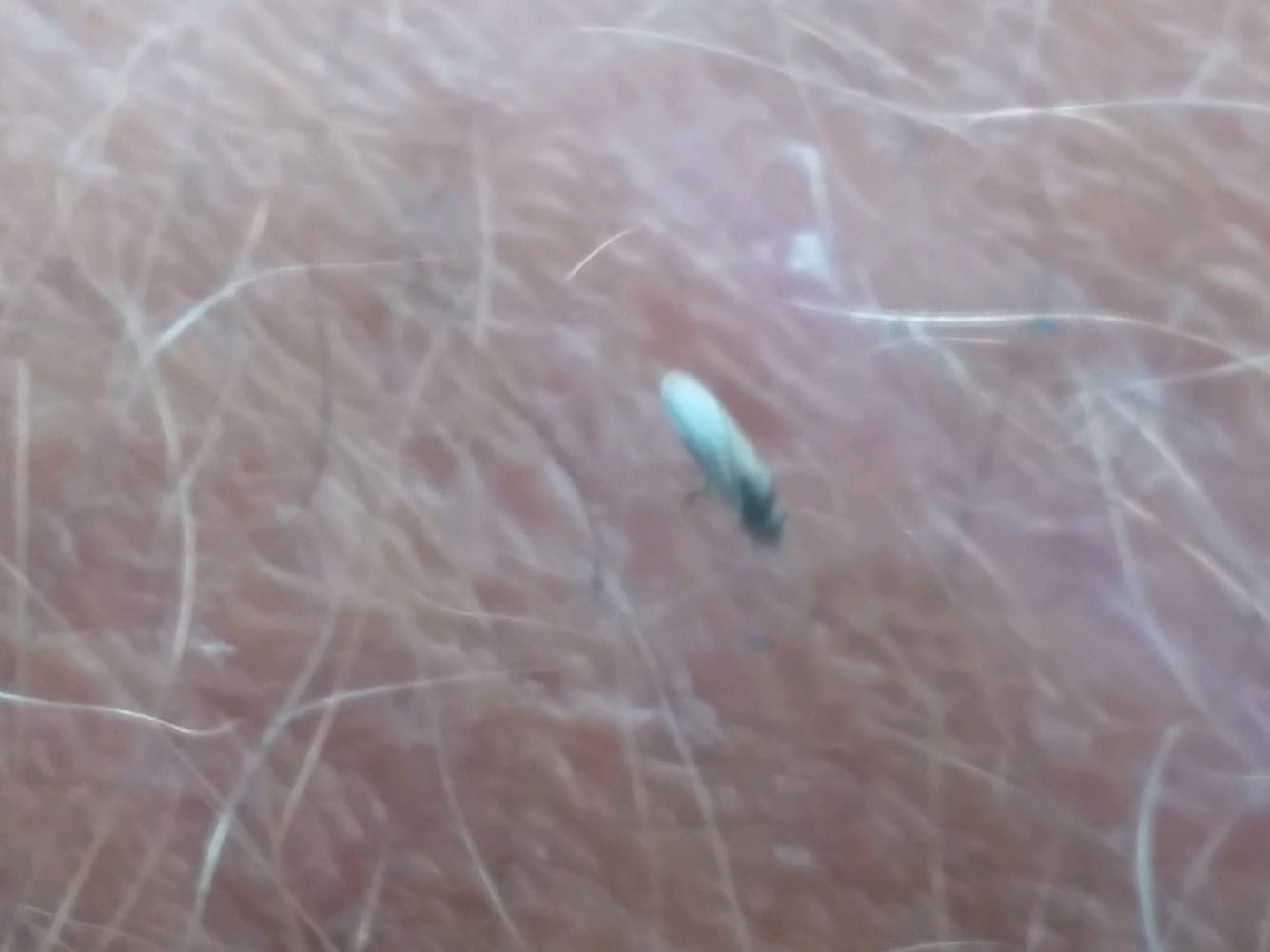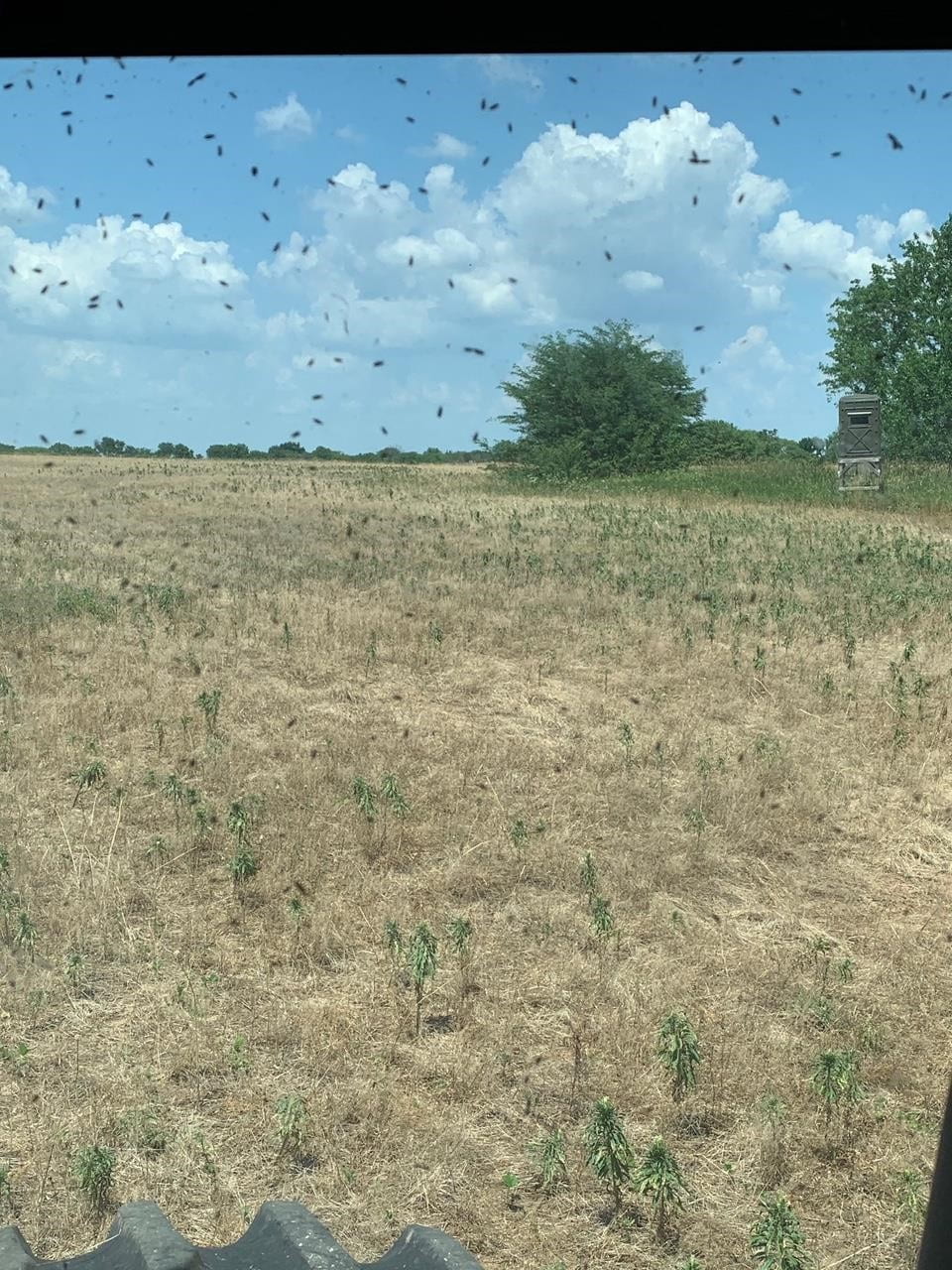–by Dr. Jeff Whitworth
Three cornered alfalfa hoppers (TCAH) (see adult, fig 1.)
Figure 1 Three Cornered Alfalfa Hopper Adult (Ed Beeson)
are causing concern in southeast Kansas soybean fields. TCAH’s have been reported from Kansas in prior years but not many and most often from alfalfa fields. As the name implies, they will feed from the phloem in alfalfa/sweet clover/peanuts/etc. and usually do not reach population levels that would cause economic losses-more just a novelty in Kansas, so far. However, in parts of the south and southeastern U.S. they can reach densities that may require treatment, especially in soybeans. Both nymphs (see nymph fig 2)
Figure 2 Three Cornered Alfalfa Hopper Nymph (Ed Beeson)
and adults may suck the juice from the plant’s phloem in such a pattern as to cause the stem to actually break (see fig 3.) at the point of this feeding and thus the plant my lodge. However, in Kansas, this remains a rare occurrence but one that should continue to be monitored.
Figure 3 Soybean stem (Ed Beeson)

